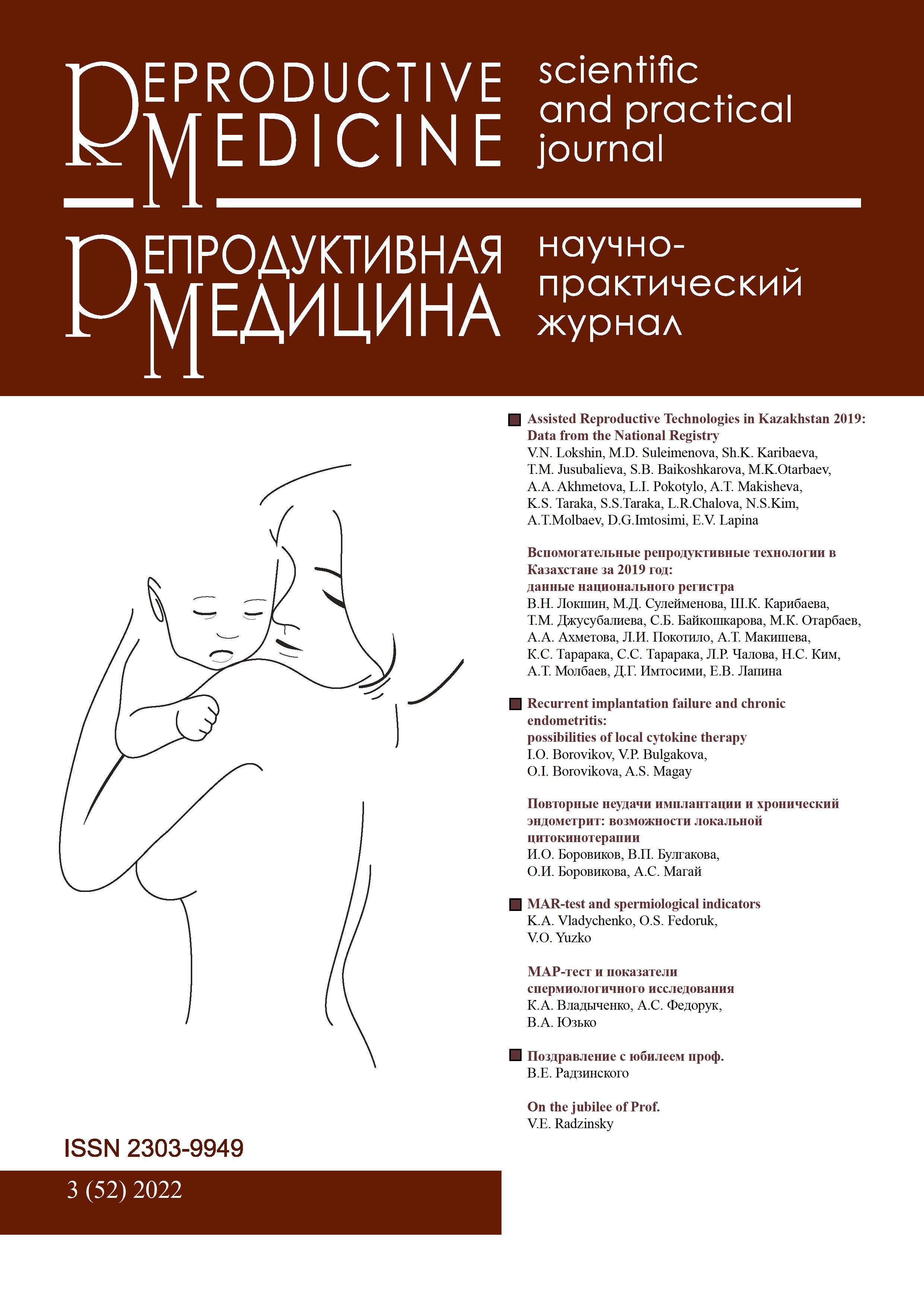A prognostic model of the influence of infectious extragenital pathology on the prenatal rupture of membranes
DOI:
https://doi.org/10.37800/RM.3.2022.68-73Keywords:
infectious diseases, extragenital pathology, prelabour rupture of membranes (PROM)Abstract
Relevance: Prenatal rupture of membranes (PROM) is one of the most common complications of term pregnancy. Water breaking in the absence of labor increases operative labor, fetal suffering, and the risk of infectious complications for the mother and fetus. The etiology of PROM is currently dominated by the theory of the influence of an infectious factor. However, most publications focus on genitourinary infections, for example, the carriage of Beta-hemolytic streptococcus. The available scientific data on the presence and structure of extragenital pathology as predictors of amniotic fluid rupture do not give a complete
picture, leaving this issue relevant and debatable.
The study aimed to assess the impact of infectious extragenital pathology on the frequency of prenatal rupture of membranes in term singleton pregnancy.
Methods: Pregnant women were divided into two groups: with PROM or with intact amniotic fluid. In the study, the anamnesis of 99 pregnant women was collected to identify possible causes for PROM.
Results: Anamnesis analysis showed significant differences in the frequency of factors aggravating the somatic history, such as the presence of chronic foci of infection (p=0.024) and past infectious diseases during the current pregnancy (p=0.0001).
The proposed model allowed for predicting PROM in pregnant women with infectious diseases: the positive predictive value was 51.6%, the negative result was 85.3%, and the relative risk was 3.5.
Conclusion: Timely detection and treatment of infectious pathology before and during pregnancy can reduce the PROM frequency. The relatively low diagnostic sensitivity (61.5%) indicates the presence of additional confounding factors that influence the incidence of prenatal water breaking. This suggests the need for further research.
References
Menon R, Richardson LS. Preterm prelabor rupture of the membranes: A disease of the fetal membranes. Semin Perinatol. 2017 Nov;41(7):409-419. doi: 10.1053/j.semperi.2017.07.012.
Selmer-Olsen T, Lydersen S, Morkved S. Does acupuncture used in nulliparous women reduce time from prelabour rupture of membranes at term to active phase of labour? A randomised controlled trial. Acta Obstetricia et Gynecologica Scandinavica 2007;86(12):1447–52. DOI: 10.1080/00016340701645287
Радзинский В.Е. Экстраэмбриональные и околоплодные структуры при нормальной и осложненной беременности / В.Е. Радзинский, А.П. Милованов. – М.: Медицинское информационное агентство, 2004. – 393 с.
Middleton P, Shepherd E, Flenady V, McBain RD, Crowther CA. Cochrane Database Syst Rev. 2017 Jan 4;1:CD005302. doi: 10.1002/14651858.CD005302.pub3. Review. PubMed PMID: 28050900.
Downloads
Published
How to Cite
Issue
Section
License
The articles published in this Journal are licensed under the CC BY-NC-ND 4.0 (Creative Commons Attribution – Non-Commercial – No Derivatives 4.0 International) license, which provides for their non-commercial use only. Under this license, users have the right to copy and distribute the material in copyright but are not permitted to modify or use it for commercial purposes. Full details on the licensing are available at https://creativecommons.org/licenses/by-nc-nd/4.0/.




